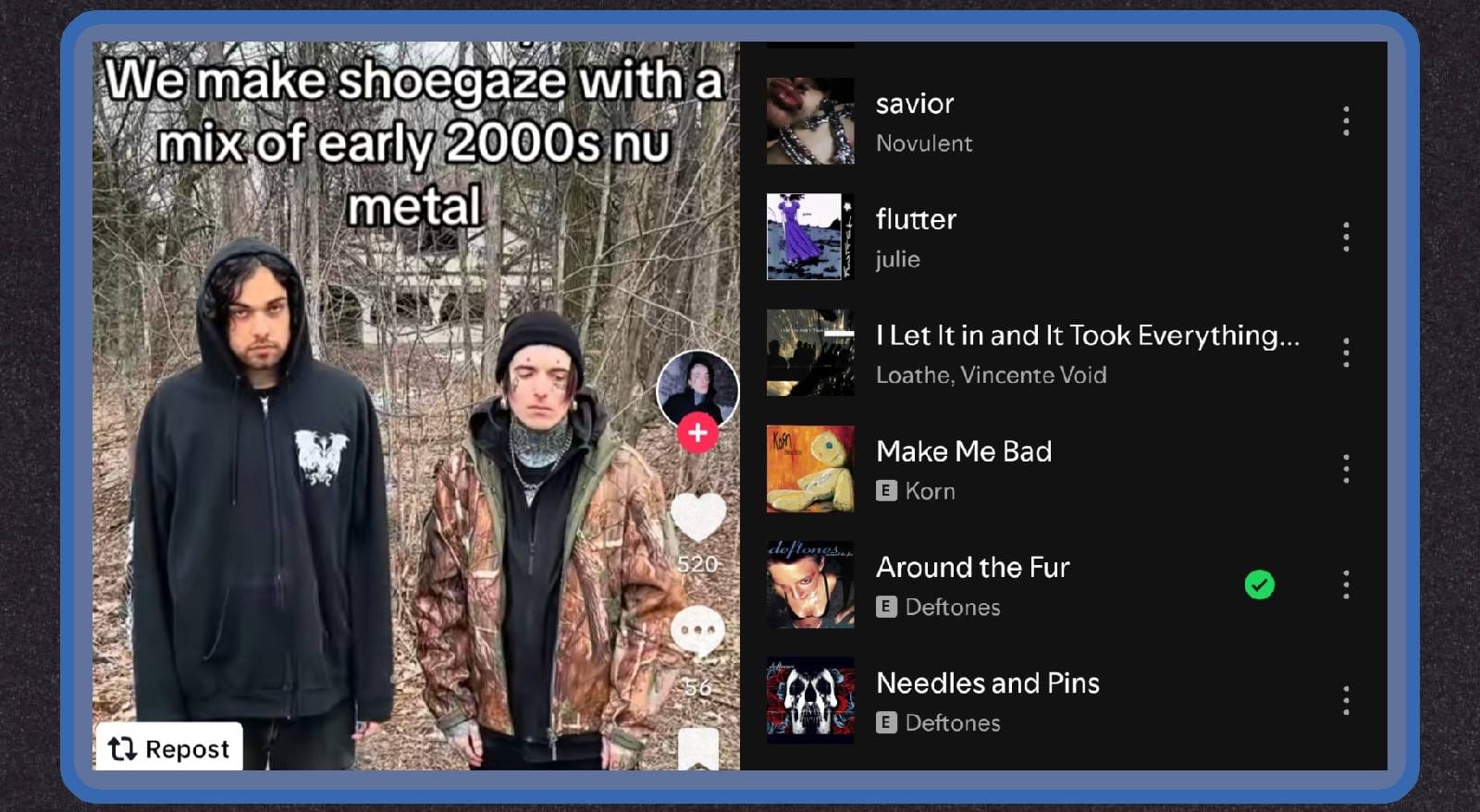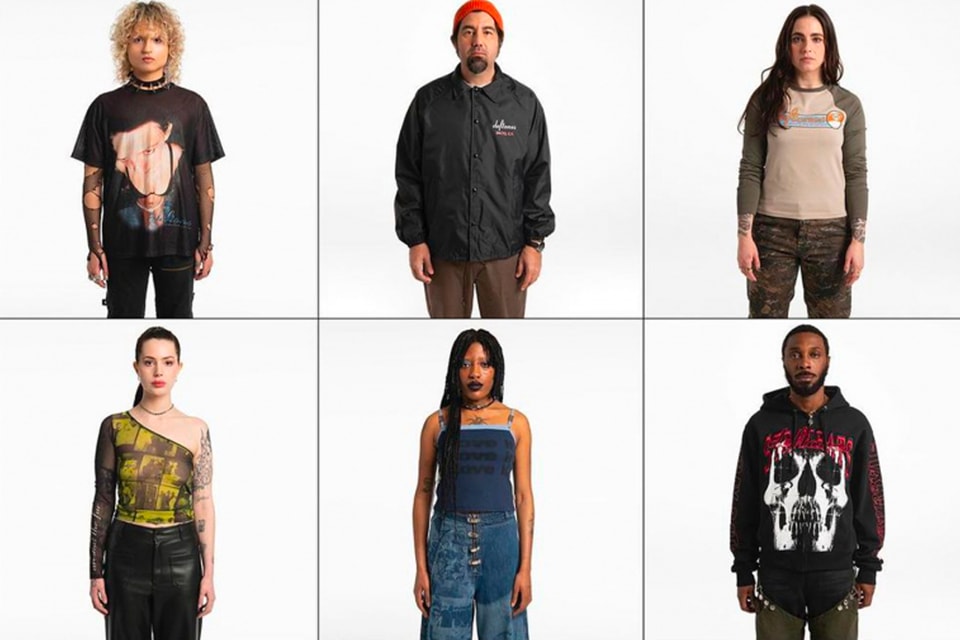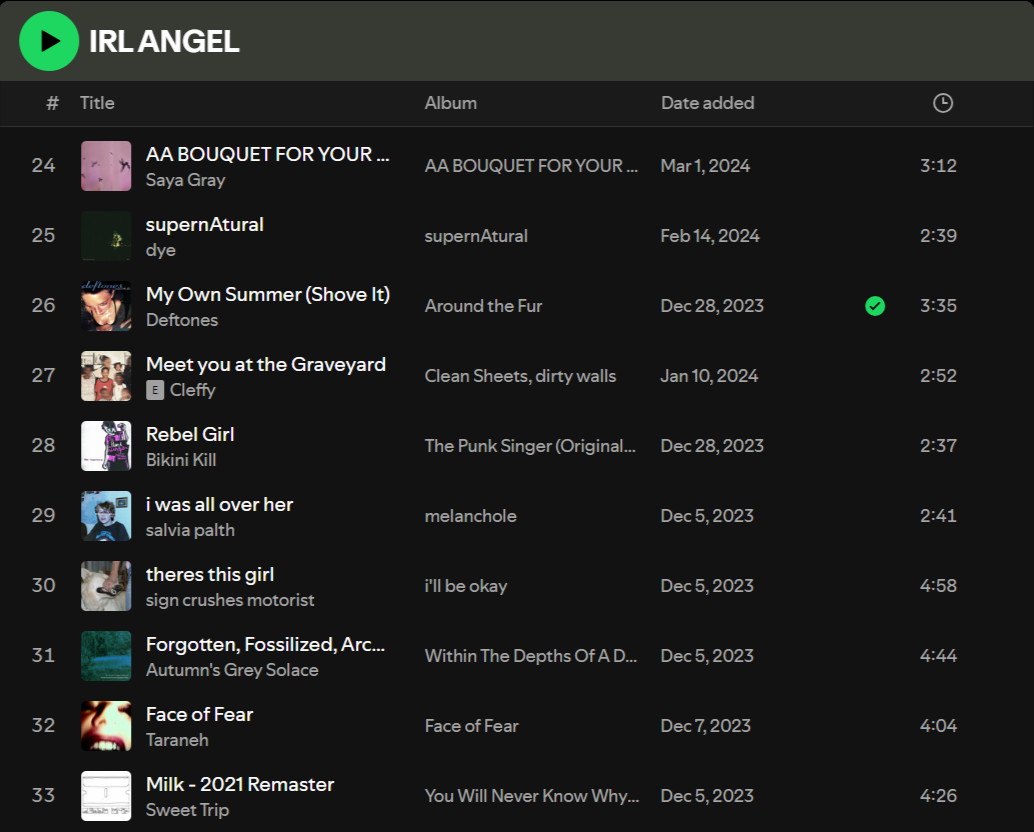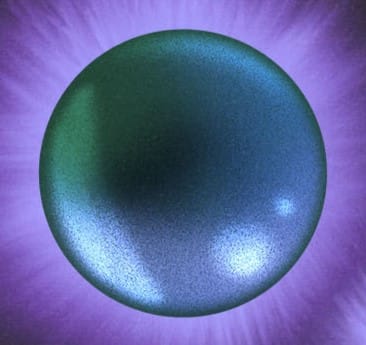How shoegaze and nu-metal became entwined: A brief explainer
I investigate why Deftones are more influential on today's shoegaze than My Bloody Valentine, and why Korn and Glare are in the same playlists.

I recently saw a post where someone asked how nu-metal and shoegaze — two genres that couldn't have been further apart in the nineties, 2000s, and 2010s — have now become weirdly conjoined. It's a great question, and one that I've spent a lot of time thinking about through my reporting on shoegaze's ongoing explosion. If you don't know what I'm referring to, then take a listen below to the song "supernATural" by dye, a buzzy 19-year-old artist (who I suspect has some kind of major-label backing) who sounds like Linkin Park one moment and Whirr the next.
The other obvious reference point in "supernAtural" is Deftones, whose sound is also a foundational influence on the following modern-day shoegaze hits: Wisp's "Your Face," quannnic's "life imitates life," Loathe's "Is It Really You?", Trxy!'s "Realize," and Fleshwater's "Closet." Moreover, trendy shoegaze bands like Narrow Head, trauma ray, and Leaving Time (and the hundreds of contemporary groups who sound exactly like them) have a healthy amount of Deftones in their bulky, metallic shoegaze makeup. You might even call these bands "nu-gaze," a cheeky tag that was initially applied to second-wave shoegaze bands emerging in the early 2000s, but has since been re-contextualized on TikTok to mean bands fusing shoegaze and nu-metal (a more practical application for "nu-gaze," I'd say).
Deftones' membership in the nu-metal genre has literally always been debated, and they're often referred to as "alt-metal" to distinguish their gauzy, sensual sound from the hooligan romps of Limp Bizkit, Korn, and their many unsavory disciples. But at the end of the day, nu-metal was always more of a culture and a scene than a specific set of sonic signifiers, and the word "nu-metal" is used today to evoke a certain epoch in heavy music history. Deftones were undoubtedly part of that Y2K major-label metal ecosystem, and they've since remained embedded in that world, touring with veteran nu-metallers and frequenting the tops of big-tent metal festivals. All of which makes it striking that Deftones have now become so closely associated with shoegaze, a genre the band have always been personally influenced by, but never particularly influential on. Until now.
So why is this happening? Why are Deftones suddenly more influential on today's shoegaze breakouts than My Bloody Valentine? Why are there countless TikToks containing the tags "#numetal" and "#shoegaze" — either to promote nu-gaze songs, or to discuss the genre's relation to one another? Why is there a mega-popular Spotify playlist called "deftones gym playlist to go insane to" that tosses nu-metal bigwigs like Limp Bizkit, Slipknot, and Korn in with young shoegaze progenitors like Glare, Leaving Time, and Wisp? Why did Sick New World festival evolve from an explicit nu-metal nostalgia fest in 2023 to a nu-metal/shoegaze hybrid in 2024 where Slowdive and Drop Nineteens shared a bill with Slipknot and System of a Down?
.png)
These are questions that I'll one day answer in granular detail. But for the purposes of this (somewhat) simplified article, I think the nu-metal/shoegaze crossover can be attributed to three recent advancements: 1) The increasingly Americanized sound of shoegaze. 2) The increased visibility of shoegaze. 3) The increased fragmentation of genre on the platforms in which shoegaze is being consumed.
Shoegaze keeps getting heavier and more Americanized
When shoegaze originated in the U.K. during the late 1980s, it was basically an off-shoot of English indie-rock. The sounds of Slowdive, Lush, Ride, etc. can all be traced back to 1980s forbearers like Cocteau Twins, The Jesus and Mary Chain, and The Cure. The metal bands of the time, whether Black Sabbath, Mötley Crüe, or Metallica, had utterly no relation to what the first-wave shoegazers were doing. My Bloody Valentine's groundbreaking 1988 debut, Isn't Anything, and their early-90s EPs, Glider and Tremolo, form the bedrock of shoegaze, and while those projects are certainly clamorous and physically imposing, "heavy," as it relates to metal, nu- or otherwise, is not an adjective that's fit to describe MBV's disembodied squalls of psychedelic noise and purring, sensual vocal intonations. Think of the words you'd associate with nu-metal: rowdy, gaudy, eccentric, boorish, commercial. None of those descriptions apply to the classic shoegaze bands, whose sound and vibes were dulcet, dreamy, stoney, and tender.
The first wave of shoegaze was almost exclusively created by U.K. bands and enjoyed by U.K. audiences, and almost all of the quintessential records from that period sound regionally isolated from the punk/metal bastardization that was brewing across the pond: grunge. Ironically, first-wave shoegaze, which was firmly dead in the U.K. by 1994 (and in hospice throughout much of '93), didn't start to make an impression on popular American bands until the mid-90s, when groups like Smashing Pumpkins, Hum, and Failure (and less popular ones like Starflyer 59) began incorporating shoegaze-y guitar glistens into their bottom-heavy grunge-metal outputs. Deftones took up the mantle for that sound a few years later, but they were the only noteworthy nu-metal band to do so. The bands who immediately followed in Deftones' footsteps, from Linkin Park to TrustCompany, borrowed the tuneful nu-grunge components of their sound and left the shoegaze textures on the cutting room floor.
It really wasn't until the mid-2010s that bands began to resemble Deftones' variety of chunky, swaggy, headbang-able nu-gaze. Nothing's sound is far more complex than "FFO Deftones," but songs like "Curse of the Sun" and "Chloroform" certainly fit that criteria. Shortly after the Philly gazers became bastions of the genre's creeping renaissance, bands like Cloakroom, Narrow Head, Greet Death, and Holy Fawn (all American, mind you) also began sculpting different variations of the "heavy shoegaze" paradigm. Some drew from Hum, others from doom and post-metal, and of course blackgaze (black-metal + shoegaze) was popping off in the same era courtesy of Deafheaven.
Shoegaze was becoming more active in America than ever before, and the average new band sounded more like Hum or Jesu than The Boo Radleys or Slowdive. That is: heavier, grungier, more metallic. Even so, no one following this music in the second half of the 2010s was making the connection between shoegaze and nu-metal — because there wasn't one. Deftones' name got thrown around here and there, but shoegaze was still a marginal genre with little institutional support that subsisted on the fanbases of punk and indie-rock. As heavy as it was getting, it was still viewed as a distinctly separate entity from metal, especially the Ozzfest sector that nu-metal belonged to.

Mainstream metal was in a bit of a transitional period in the late 2010s, but nu-metal, which had run its course by the mid-2000s, was still years away from its nostalgic revival. Young people weren't really paying attention to nu-metal, and those who were certainly weren't the same people who were snatching up vinyl for Whirr, Nothing, and Cloakroom. Even as recently as 2018, it would've been inconceivable to imagine those two worlds having any association with one another. That quickly changed.
Shoegaze's popularity is increasing in tandem with nu-metal's revival
As I detailed in my late 2023 article, "TikTok Has Made Shoegaze Bigger Than Ever," shoegaze is, well, bigger than ever. In that piece, I wrote a lot about how that came to be and what the genre's popularity on TikTok means for the sound of contemporary shoegaze. But in this article, I'm focusing on the link between shoegaze's heightened visibility and its crossover with nu-metal, which are weirdly related to one another. The most tangible effect of shoegaze's ongoing brush with the mainstream is that it's bringing new fans into the fold who don't know anything about shoegaze, and who might never care to know anything about shoegaze. They just want to listen to the few Wisp or Glare songs they heard on TikTok, "like" a few Deftones memes, and then go back to listening to Noah Kahan, or whatever.

There's never been that kind of "civilian" interaction with the genre at any other point in shoegaze history. Prior to this moment, shoegaze had always been a subcultural genre that required some level of buy-in to engage with. Even simply scratching the surface with My Bloody Valentine and Slowdive necessitated a degree of investment in seeking out music that went beyond flicking through the radio, turning on MTV, or putting an Urban Outfitters-core Spotify playlist like Lorem on in the background. Shoegaze was an albums genre that never produced any hit singles in the U.S. (and really only a handful of minor "hits" in the U.K.), and it's been historically — and I'd say accurately, if we're using broad strokes — described as record collector music for white, middle-class indie-rock aesthetes.
Now, shoegaze is popular enough that anyone can stumble upon it on social media or on streaming platforms and engage with it on a very surface level. The 62 million streams that Wisp's "Your Face" has earned on Spotify doesn't mean that tens of millions of people are suddenly now invested in the music of Astrobrite and Xinlisupreme. Surely, the vast majority of those Wisp streams are coming from people who found "Your Face" on TikTok or through the Spotify algorithm, and have no desire to dive deeper into the shoegaze canon. They simply like a popular song. The same way someone might've liked Deftones' "My Own Summer (Shove It)" when they first heard it in 1999, but never actually became a real-deal metalhead.
At the same time shoegaze began picking up a new life on TikTok, and as its median sound continued to trend heavier, nu-metal entered its cultural resurgence. Millennials became old and washed enough to start feeling nostalgic for the (mostly) shitty music they listened to in their youth, and today's teens fell victim to the 20-year fashion cycle and decided that nu-metal's sound and aesthetics were cool to like. Between 2021 and 2023, Limp Bizkit were unironically welcomed back into the zeitgeist at Lollapalooza, Adidas launched a collab with Korn, Marc Jacobs did a line of hype-beast wares with Deftones, and Sick New World — essentially nu-metal Coachella — debuted in Las Vegas.

All of this commercial investment means that people are actually listening to nu-metal again in a serious way. Especially Deftones, who've essentially become the go-to lobby music for alternative TikTok. Now, Gen-Z are discovering Deftones for the first time. On the same app where they're discovering shoegaze. At the same time that shoegaze is sounding increasingly similar to Deftones. All of that happening in tandem has created a perfect storm for listeners to associate Deftones with shoegaze, and then by proxy, shoegaze with nu-metal.
TikTok and Spotify have collapsed music's context and eroded genre barriers
There's more to the story than just, "Deftones and shoegaze are both popular and sound kind of similar." Deftones have always been big, and heavy shoegaze has been around for decades, so why is this relation between the two of them just now being codified? I think it has less to do with the music itself and moreso a shift in how the music is being framed, both by music fans and streaming platforms.
Over the last couple years, shoegaze has been overrun by people who don't know what they're talking about. And I'm not casting negative judgment on those people because it's not necessarily their fault. Right now, hundreds of thousands of young people are finding shoegaze for the first time on TikTok and Spotify, where they're being introduced to the genre in a de-contextualized vacuum. The TikTok algorithm is feeding them visual content that happens to have a song attached to it. Sometimes, that song is Kate Bush's "Running Up That Hill," and other times that song is Whirr's "Leave."
@jaesa.corn #fyp #tippingculture #foryoupage
♬ original sound - NK - NK
Being effortlessly delivered shoegaze on a massive communication platform is extremely novel to TikTok. It requires none of the cultural knowledge or active engagement with independent rock ecosystems that previously "gatekept" shoegaze from the general public. It's actively facilitating surface-level interaction with the genre, and the platform where people jump to when they find a TikTok song they like, Spotify, is also stripping shoegaze of its long-established context and redefining the genre's boundaries.
On Spotify's genre-agnostic editorial playlists, decades worth of cultural context (IRL scenes, regional identity, defined musical lineage) are ignored to instead arrange music based on vibes and moods. The aforementioned Lorem playlist, one of Spotify's prestige editorial playlists, has no defined sonic perimeters, and currently features shoegaze songs by Glixen and Crate in the same pool as Charli XCX and Chappell Roan. Another one called IRL Angel, which seems to be designed for collecting alternative TikTok songs, boasts tracks from every popular shoegaze artist on TikTok (Whirr, Wisp, Novulent) as well as Bikini Kill, Portishead, and, wouldn't you know it, Deftones.

Someone who's first hearing shoegaze on Lorem isn't discovering shoegaze within its own context. They're hearing it alongside major-label pop artists — or, in the case of IRL Angel, alongside major-label metal artists — and therefore skipping over whatever amount of "work" was previously required to find shoegaze. There's not a "wrong" or "right" way to discover shoegaze, but the way people are finding it now, either in these deconstructed mood zones that erase the music's cultural surroundings, or on a video app with a lottery machine-like algorithm, is having an indisputable impact on the way people think and talk about shoegaze. A genre that was previously relegated to music nerd message boards, chin-stroking music publications, and the indie-rock underground.
Spotify has aided in reducing "shoegaze," which once came loaded with sonic and cultural connotations, into a vague musical moodboard that's as nebulous as "indie," "EDM," or "hyperpop," where it means completely different things to different people. The nature of TikTok as a video content app, not a music platform, has facilitated a meme-centric discourse around shoegaze that also sublimates the genre's musical essence into a misty fragrance, allowing anyone to spritz their vague idea of what the genre is onto viral memes, introducing the chalk outlines of shoegaze to more people than ever before, but further softening shoegaze's identity in the process.
Under those conditions, it's become extremely easy for shoegaze, more malleable and meaningless than ever, to be grafted onto something like nu-metal, another cultural phenomenon (albeit a more vacantly commercial one) that's been reduced to particles on the illiterate commodification services that drive our online experience. I'm making this sound dire, but I personally think this environment is a double-edged sword for shoegaze. On one end, the demolition of genre and cultural barriers has opened up shoegaze to more oddball ideas than ever, and revitalized the genre's dried-up palette with radical new approaches that I often find invigorating.
THIS IS THE WORST VIDEO EVER
— SoJuCow 🔜 MFF24 (@puffdragon711) May 8, 2024
IM SERIOUS pic.twitter.com/CZXx6jNQcf
On the other end, it's made the discourse around shoegaze insufferable for actual fans of the genre. "Shoegaze" is just a buzzword on TikTok that's as commonly applied to non-shoegaze bands like Deftones, Duster, and Beach House as it is actual shoegaze acts. In one viral TikTok with Wisp (see above), an innocently dopey influencer asks the shoegaze breakout to identify three "shoegaze songs" for money — except two of the songs he selects are firmly not shoegaze. That miseducation about the genre's most basic tenets has become so commonplace that "shoegaze dilettante" is a genre of meme in and of itself. The one down below is a masterclass in illuminating the ongoing blight of shoegaze illiteracy.
Credit: The Soundgeist pic.twitter.com/wHsuzTrGjN
— Shoegaze Memes (@ShoegazeM) April 11, 2024
The most sinister implications of this trend (that shoegaze will be fractured, co-opted by commercial interests, and scrubbed of its subcultural identity) are still just hypotheticals at this point. Right now, this generation of shoegaze de-contextualization has mostly amounted to boatloads of cringe; annoying, but not materially threatening to shoegaze lifers. The most profoundly weird effect has been shoegaze's interloping with nu-metal, which may have peaked in 2023, but will surely have lingering effects for years to come.
Currently, Slowdive, My Bloody Valentine, and Wisp all turn up in the "Fans also like" section of Deftones' Spotify page, right alongside nu-metal bands like Korn and Slipknot. What this demonstrates is not that Spotify thinks Deftones, Slowdive, and Korn sound alike. The "Fans also like" tab is generated by user data, and the data is revealing that people who listen to Deftones on Spotify are also commonly listening to Slowdive and Korn. (It's also worth noting, because it blows my mind, that the first band listed in Deftones' "Fans also like" page are Duster. Which means Deftones fans are more likely to listen to Duster on Spotify than even other metal bands.)
From there, it's a feedback loop. People listening to Deftones on Spotify are recommended other shoegaze bands. Those bands get thrown into Spotify playlists and TikTok videos with Deftones, which signal boosts those bands and makes them more popular. People who are new-ish to shoegaze discover those bands and think, "Oh, this sounds like Deftones." Hell, now people might hear that dye song, "supernAtural," and think, "Oh, this sounds like Linkin Park." I can already hear the doofy TikTok in my head: "Here are five shoegaze songs that sound like Linkin Park's 'Numb'."
Shoegaze: in the end, does it even matter?

